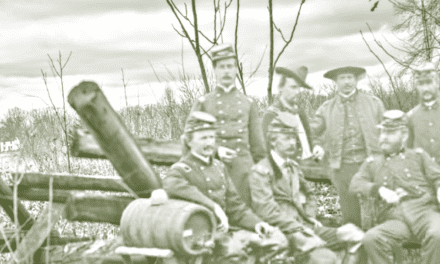The Wisconsin Historical Society (WHS) has played a crucial role in preserving and showcasing the rich history of our state.
WHS has developed into one of the largest and most influential historical organizations in the United States.
Origins and Early Years
The first official organization dedicated to preserving the state’s history dates back to 1846 when the Wisconsin Historical Society was established by an act of the territorial legislature.
However, its establishment was made possibly by the earlier efforts of several individuals, including Lyman C. Draper and Increase A. Lapham.
These early civic leaders recognized the importance of collecting and preserving historical documents and artifacts.
The society’s early years were marked by a commitment to collecting and documenting the history of the state.
Its first major acquisition was made in 1853 when it obtained the collection of Lyman C. Draper. Draper was a passionate collector of manuscripts and materials related to the Northwest Territory.
Expansion and Development
Throughout the late 19th and early 20th centuries, the Wisconsin Historical Society expanded its collections and increased its influence within the state and beyond.
In 1900, the society moved into its current location in Madison, an architectural gem designed by Ferry & Clas in the Beaux-Arts style.
Under the leadership of such influential figures as Reuben Gold Thwaites and Charles E. Brown, the WHS transformed into a premier research institution.
Thwaites, who served as the society’s secretary and editor from 1885 to 1913, played a pivotal role in expanding its publication program
That effort included historical journals, books, and the monumental 73-volume “Collections of the State Historical Society of Wisconsin,.”
The WHS also developed a vast library and archival collection. It houses countless books, manuscripts, maps, photographs, and oral histories.
These archival resources became essential for researchers, scholars, and the general public alike.
To this day, the society’s library remains one of the most comprehensive resources for studying the history of the state.
Preservation and Advocacy
Another significant aspect of the Wisconsin Historical Society’s work is its dedication to historic preservation.
The society actively advocates for the preservation of important landmarks and sites throughout the state. It has played a crucial role in supporting legislative initiatives, providing expertise, and promoting public awareness of the value of historic preservation.
One notable example is the society’s involvement in the establishment of the Wisconsin State Historic Sites system.
This initiative began in the 1940s and aimed to identify, protect, and interpret historically significant places across the state.
Today, the Wisconsin Historical Society operates numerous historic sites and museums, including Villa Louis, Pendarvis, and Old World Wisconsin.
Each location provides visitors with immersive experiences and insights into Wisconsin’s diverse history.
Public Engagement and Education
Over the years, the Wisconsin Historical Society has also prioritized public engagement and education as part of its mission.
It offers a wide range of programs and services for communities, educators, and students.
Through exhibits, tours, lectures, workshops, and educational resources, the WHS strives to make history accessible and relevant to people of all ages and backgrounds.
The society also supports local historical organizations and individuals through the granting of funds and resources.
These grants allow smaller historical societies and groups to undertake their own preservation and historical research projects.
This ensures that Wisconsin’s history is preserved and celebrated at the grassroots level as well.
Digital Age and Future Directions
As technology advanced, the Wisconsin Historical Society embraced the digital age and utilized digital platforms to enhance accessibility and engagement with its vast collections.
Extensive digitization efforts have made many historical documents, photographs, and resources available online, enabling researchers and the public to access them remotely.
This digital transformation has significantly expanded the reach and impact of the society’s resources.
Looking toward the future, the Wisconsin Historical Society is committed to continuing its mission of collecting, preserving, and sharing the history of the state.
It recognizes the importance of engaging with diverse communities and perspectives to tell a more comprehensive and inclusive history of Wisconsin.
Through ongoing collaboration, research, and public programming, the WHS aims to remain at the forefront of historical preservation and education in the state.
From humble beginnings as a small organization focused on collecting historical materials, it has grown into a nationally recognized institution dedicated to preserving and promoting the history of Wisconsin.
With its vast resources, commitment to preservation, public engagement, and technological innovation, the WHS continues to be a vital guardian of Wisconsin’s heritage.
For additional information, visit: https://www.wisconsinhistory.org/
















